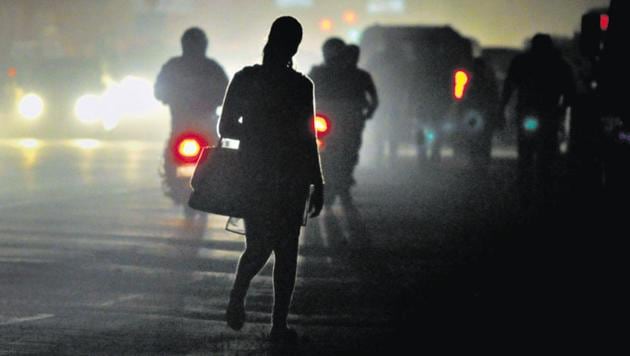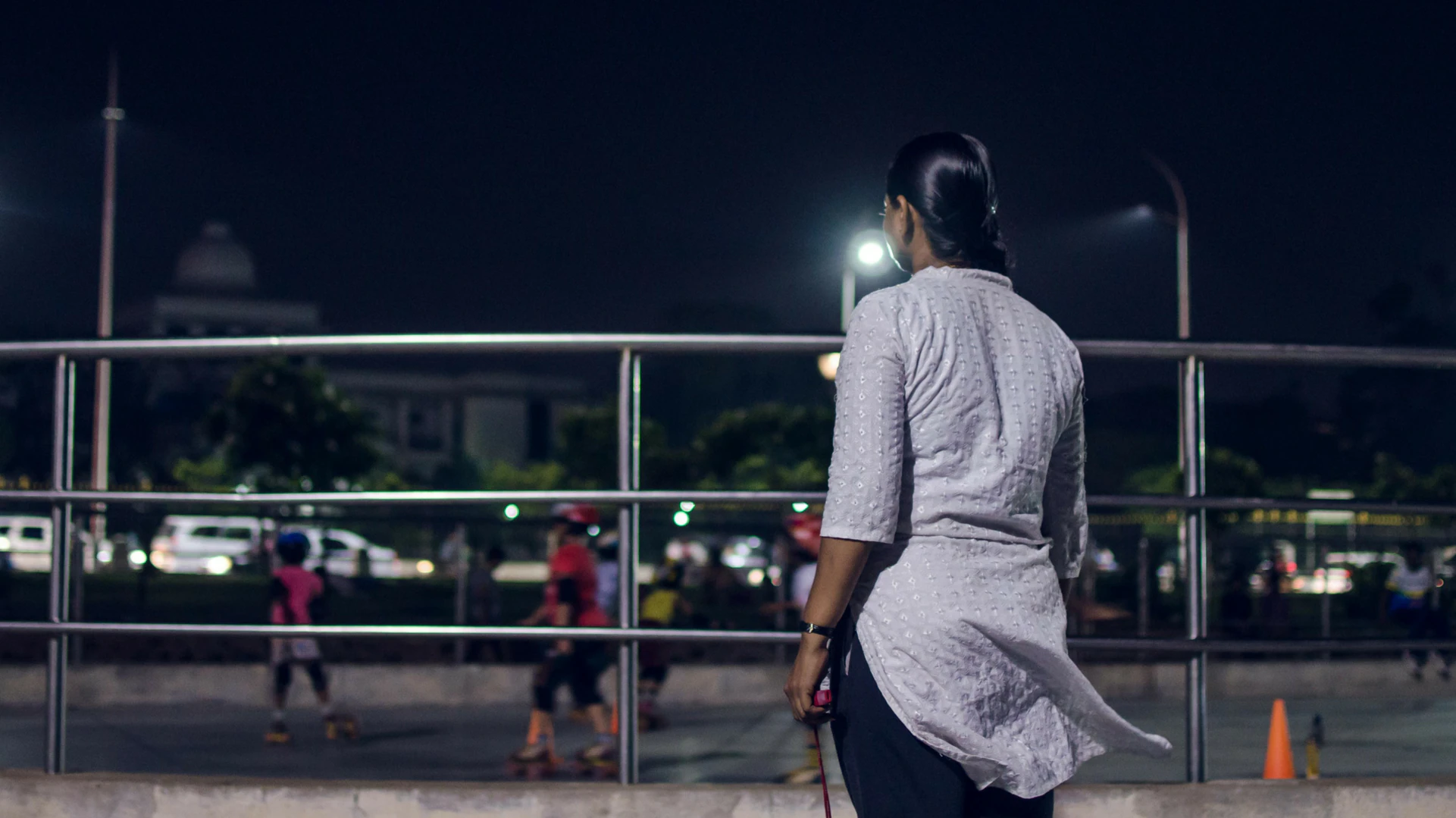The Government of India is celebrating Azadi Ka Amrit Mahotsav marking 75 years of the country’s independence from the Crown’s rule. While we set out to make ‘Har Ghar Tiranga‘, are our homes safe enough for our own citizens? Are streets secure for the children of free India?
Providing a flag to each household is surely a high-priority task in building the brand image of a nation where even the lions of the Ashoka Pillar are in distress. Let us take a tour of the said households and the streets of this robust nation to see what freedom means to cis-women and gender and sexual minorities in the country.
India ranked 148 out of 170 globally in the ‘Women, Peace And Security Index 2021‘. The 5th round of the National Family Health Survey (NFHS-5) shows that 30 per cent of women in India between the ages of 15-49 have experienced physical, sexual, or domestic violence. India’s 76th Independence Day comes only a few days after Raksha Bandhan this year, a festival of felicitating “male saviours” who vow to protect their sisters. So, what exactly are we afraid of?

Nisha, a student of the National Centre for Biological Sciences, identifies as a queer woman. She says, “Men, single or in groups, are the primary source of fear. Especially if they appear drunk.” Stephy Stephen, a Master’s student at Jamia Milia Islamia, resonates with the same fear, “Men. Men in general are my biggest fear… My fears are also very specific to sexual assault or physical assault, and never of theft or anything else.”
This brings us to the question of the “cloth” – the most common denominator in public safety as doled out by a majorly rape apologist population. The difference of an inch of cloth can imply “asking for it” in this nation. Stephy, a regular commuter of the metro, says, “If I am taking a metro, I always carry a jacket or shrug.” Any femme-expressing individual growing up in India knows that a jacket or shawl is a way to hide that carefully put-together ensemble. It is a selection process of carefully matching outfits with social situations, company, economic hierarchies, and so on
Kanoon ke haath lambe hain (the arms of justice are long and all-encompassing), but not more far-reaching than the flying elbows in Indian public transport. When asked about travelling by public transport in India, Nisha says, “I try to keep someone updated on where I am. I try to shield my body with my arm to protect myself from unwanted touches.”
A study across six Indian states conducted by the United Nations Development Fund (UNDF) with the Breakthrough Trust revealed a stark statistic of 90 percent women and girls experiencing sexual harassment in public spaces, including bus-stops and inside buses. An Ola Mobility survey across 11 cities showed that only 9 per cent of women feel safe in public transport. Almost no survey takes into account the movement of gender minorities in the city.
Swarnendu, identifying as gender non-binary, shares their experience travelling publicly, “I feel very anxious while travelling in public transport because of all the staring and stuff… When I present masculine I feel much safer than when I present feminine. If I was able to make choices freely I would’ve worn clothes completely different than I do now.”
Also read: 6 Forgotten Dalit, Bahujan And Adivasi Women Who Fought For India’s Independence

This brings us to the question of the ‘cloth’ – the most common denominator in public safety as doled out by a major rape apologist population. The difference of an inch of cloth can imply ‘asking for it’ in this nation. Stephy, a regular commuter of the metro, says, “If I am taking a metro, I always carry a jacket or shrug.“
Any femme-expressing individual growing up in India knows that a jacket or shawl is a way to hide that carefully put-together ensemble. It is a selection process of carefully matching outfits with social situations, companies, economic hierarchies, and so on.
“If I am going out with a lot of my friends, to a posh part of the city… I would not be uncomfortable wearing a sleeveless dress. But I would never do that if I am walking alone in the streets, in a locality that is not around a club or something,” Shinjini, a queer individual from Kolkata, shares how mere stares can set off alarms and triggers. “Lately, I’ve been receiving a lot of passive and sometimes straightforward contempt from strangers on the road as well as a lot of eve teasing and staring, which makes me feel really small and intimidated in public spaces and at times triggers my panic-induced asthma…“
In a free India, women and queer folx are ‘free’ to wear anything, but in the not-so-fine print, the country washes its hands from the consequences. The responsibility is theirs to choose well. “I can’t just go out there and be myself openly. I don’t get to make a lot of choices, despite my privileges. I have to be very calculative about where I open up and how I open up,” Sreetama adds.

In the NFHS-5, it was highlighted that 83 per cent of married women, under the age of 49, have experienced abuse at the hands of their husbands. Intimate violence has always been one of the most prevalent yet silenced or normalised forms of gender-based violence.
Nisha shares her experience growing up, “I have not been safe in my household, which was outwardly an affluent and progressive upper-middle class urban home. I have borne witness to intimate partner violence of multiple older family members.” The covid crisis turned our homes inside out as the public and personal spaces were scrambled. Reports of intimate partner violence increased in leaps and bounds.
According to official reports, the National Commission for Women (NCW) saw a 2.5 times increase in complaints of domestic violence in April 2020, a month into the lockdown. Priyanshi Chauhan’s study also reflects the same image where she found that “approximately 22.5 per cent of married women, as compared to zero men and unmarried women, worked for more than 70 hours per week.”
It is when we listen to the voices our society tends to infantilise and invisibilise, that we can aggregate the meaning of this Mahotsav. The day the country colours itself in the tricolour of independence should also be a day to review what the streets, households, and public spaces have meant for its citizens, what autonomy means to its women, and what freedom is for the queer folx. India’s independence is not a destination to celebrate, but a journey to reflect on
In the Digital India age, and post covid online world, how are the independent women of India navigating the cyberspace? Based on an internal study by Meta, Indian women are quitting Facebook “worried about their safety and privacy in the male-dominated social network.“
Only a week ago, a notorious instance of violation of cyber freedom was displayed by an elite educational institute in Kolkata. A female professor’s personal images were leveraged against her, copies of the same were readily distributed, and she was shamed for her clothing choice. They even forced her resignation. Even while multiple survivor accounts cannot shake predatorial men from authority chairs at such universities, freedom of self-assertion and expression is conditional for women and queer individuals in this country.
Stephy emphatically adds, “Women are not even free to be themselves in cyberspace. You have to think about 10 things before you post or even share something.” From screen grabbing without consent, illicit sharing of private information, trolling, blackmailing, and doxing, to unsolicited dick-pics… the list is long and heavy but always at the back of our minds when we navigate the internet.
Add to it, young girls are the most vulnerable victims of Child Sexual Abuse Material (CSAM). Without the physical world becoming safer, the cyber world cannot present itself as a free space for women and queer folx to engage with.
Also read: Female Kolkata Professor Asked To Quit, Pay 99 Crores For Swimsuit Post On Private Instagram Account

As the wave of nationalism has now politically grown to a steady tide, how free does this country feel? Sreetama reflects with her youthful wisdom, “A free country is where everyone can express themselves freely, irrespective of their identities, and not get attacked for it. Our country is light years away from that.”
It is when we listen to the voices our society tends to infantilise and invisibilise, that we can aggregate the meaning of this Mahotsav. The day the country colours itself in the tricolour of independence should also be a day to review what the streets, households, and public spaces have meant for its citizens, what autonomy means to its women, and what freedom is for the queer folx. India’s independence is not a destination to celebrate, but a journey to reflect on.
Featured Image Source: Firstpost
About the author(s)
She/they is an editor and illustrator from the suburbs of Bengal. A student of literature and cinema, Sohini primarily looks at the world through the political lens of gender. They uprooted herself from their hometown to work for a livelihood, but has always returned to her roots for their most honest and intimate expressions. She finds it difficult to locate themself in the heteronormative matrix and self-admittedly continues to hang in limbo





Men’s lives are destroyed by women who file false cases to settle personal grudges. Men suffer from extortion and blackmail after marriages with threats of a false case. Men lose everything in biased courts after a divorce – from half of everything they own to their children, and are forced to pay alimony and child support. After a divorce many fathers don’t get to see their children for years. Domestic violence against men is ignored. Husbands are physically and verbally abused by wives but that does not make headlines. No one talks about cheating wives. No one talks about paternity fraud. Women always receive special treatment everywhere. Women only see men for what they earn, not who they are. Women want to smash the patriarchy but want daddy to pay their school and college fees.